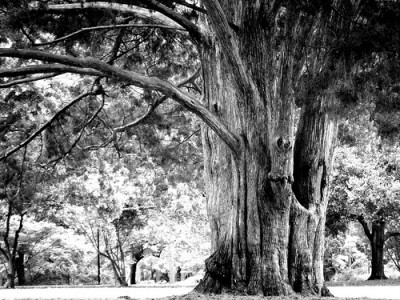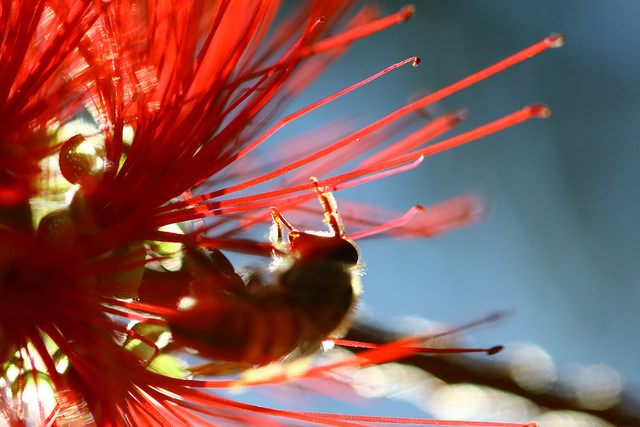World’s leading ecologists have found out in a long term study that most world trees between 100-300 years old are dying around the world. The reasons for their deaths include forest fires, logging and cutting because of urban developments.
Lead author Professor David Lindenmayer of the ARC Centre of Excellence for Environmental Decisions (CEED) and Australian National University warned that the problem is worldwide and happening everywhere, whether it is a forested area, a farm or an urban locality.
“Large old trees are critical in many natural and human-dominated environments. Studies of ecosystems around the world suggest populations of these trees are declining rapidly,” he and colleagues Professor Bill Laurance of James Cook University, Australia, and Professor Jerry Franklin of Washington University, USA, say in their Science report.
“Research is urgently needed to identify the causes of rapid losses of large old trees and strategies for improved management. Without… policy changes, large old trees will diminish or disappear in many ecosystems, leading to losses of their associated biota and ecosystem functions.”
Prof. Lindenmayer says they first noticed the disappearance of large, old trees while examining Swedish forestry records going back to the 1860s. Then a 30-year study of Mountain Ash (Eucalyptus regnans) forest in Australia confirmed not only that big old trees were dying en masse in forest fires, but also perishing at ten times the normal rate in non-fire years — apparently due to drought, high temperatures, logging and other causes.
The scientists then began looking around the world for similar cases. They found that trees were being cut or just perishing in prominent places like California’s Yosemite National Park, on the African savannahs, in the rainforests of Brazil, the temperate forests of Europe and the boreal forests of the far north.
Death of Largest Life Forms
Old trees more than 100 years old are the biggest life forms on earth. Not only do they provide oxygen, shelter to hundreds of birds and other creatures, the root system of these trees is essential in holding the soil. Soil erosion, earthquakes, landslides, water logging etc. are all dealt with and protected from by a single tree with a strong foundation.
“Large old trees play critical ecological roles. They provide nesting or sheltering cavities for up to 30% of all birds and animals in some ecosystems. They store huge amounts of carbon. They recycle soil nutrients, create rich patches for other life to thrive in, and influence the flow of water within landscapes and the local climate.
“Big trees supply abundant food for numerous animals in the form of fruits, flowers, foliage and nectar. Their hollows offer nests and shelter for birds and animals like Australia’s endangered Leadbeater’s Possum (Gymnobelideus leadbeateri) — and their loss could mean extinction for such creatures.
“In agricultural landscapes, large old trees can be focal points for vegetation restoration; they help connect the landscape by acting as stepping stones for many animals that disperse seeds and pollen,” he says.
The reasons for the death of these big giants is as follows according to the researchers,
- Land clearing
- Agricultural practices
- Man-made changes in fire regimes
- Logging and timber gathering
- Insect attack and
- Rapid climatic changes
The researchers add that the tragedy is similar to the fate of big animals of the world like rhino, tigers, elephants, sharks and dolphins. The scientists also warn that almost nowhere do conservation programs have the time-frames lasting centuries, which are needed to assure the survival of old trees.
“Just as large-bodied animals such as elephants, tigers and cetaceans have declined drastically in many parts of the world, a growing body of evidence suggests that large old trees could be equally imperilled,” they warn.
What is urgently needed is assess the regions where large trees are still present and take urgent measures to ensure they survive.
In India, large trees like the banyan and the ficus are still safe because of the religious sentiments attached to them. But apart from these known tree varieties, many old trees are vehemently chopped off almost every day. Road widening, building constructions, expanding farmlands etc. are reasons these ancient trees are cut. Although some cities have stuck to their old trees, the loss is still significant when considering the many unknown, unreported cases of tree felling. People living in a locality for many years will readily agree how their neighbourhood greenery has changed dramatically over the years and surely some of the first trees to be cut down are the once that had spread their ancient roots all around.
The grand old trees that have continued to serve us for ages, need our helping hand, urgently.
More related stories,
Scinetists find Cancer Treating Properties of Rare Plant
Western Ghat Medicinal Plants face Extinction Threats
Image by rachfog via cc/Flickr







2 thoughts on “Big, Old Trees are Dying”